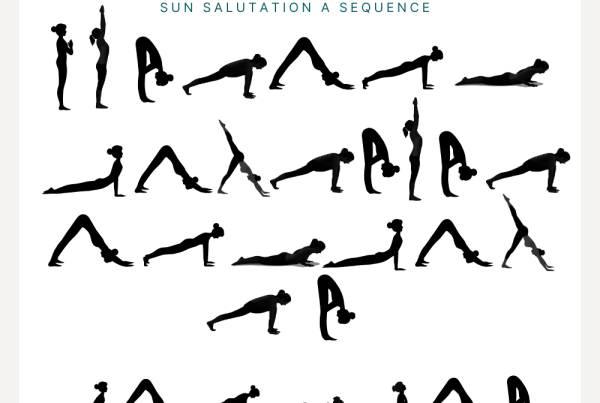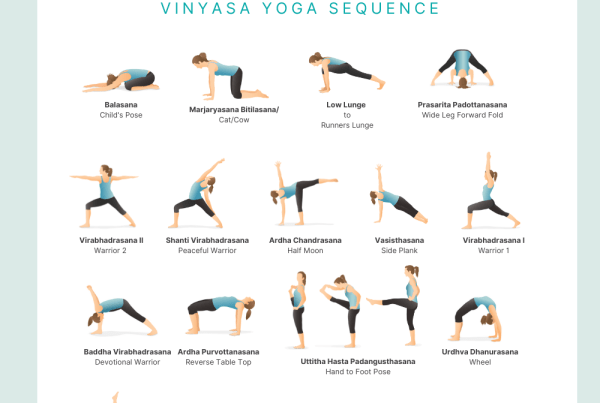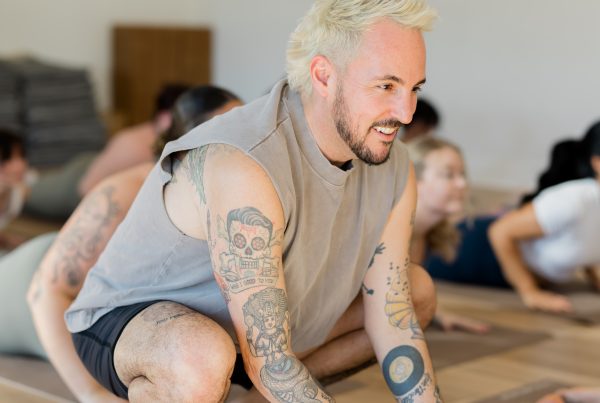There’s something about inversions that can intimidate even the most seasoned yogis. The notion of inverting upside down or sideways with nothing but the bamboo flooring below can deter students from trying more complex postures. I’m a 200-hour certified yoga instructor, and it took me many failed attempts before I felt comfortable lifting my feet off the ground. But inversions are not meant to be feared as they aim to quiet your mind and your body. When teaching inversions, I instruct my students through the postures step by step, allowing them to decide what feels best for their practice. Below are some tips that I learned that could help you conquer your fear of inversions.
Do Warm-Ups
Fear is a common psychological reaction to heights for both children and adults. It’s an integral part of our development, in which it alerts us of a potentially dangerous situation where we could hurt ourselves. But the concern is when the wariness holds a student back from discovering their abilities. There are various exercises that you can practice to overcome your apprehension towards inversions. These warm-ups help your body build the strength it needs while modifying the pose to your comfort level.
For example, to prepare for Bakasana (Crow Pose), stand with your feet about hip-width apart and bend your knees. Place both palms on the floor and gaze at the ground in front of you. Bend your elbows and transfer your weight into your hands, bringing your knees and shins to the back of your upper arms. Instead of attempting to lift into the full extension of the pose, stay in Malasana (Squat Pose) and lift one foot at a time off the mat, mimicking the motion.
Practice in a Comfortable Space
The purpose of inversions in a yoga class is to have calming after effects since you bring your heart above your head. This is why they are generally taught towards the end of a class when your body is warmed up, allowing blood to flow more freely to your upper body. However, if you are a newbie yoga student or you’re not comfortable being upside down, finding a safe space to practice your inversions would help you feel more protected.
Consider practicing on the beach, on a grassy field, or over some cushiony surface, cultivating a secure environment. As I mentioned earlier, I have fallen many times while experimenting in inversions, but conquering that fear is how I learned to master more challenging postures. Depending on where you decide to practice, be aware that the surface may feel different from the studio. The idea of changing your setting is mainly to provide a sense of extra protection in your practice, not to mold into the perfect inversion.
Enlist a Partner
Enlisting a trusting friend, instructor, or fellow yogi to assist you can be an immense comfort while practicing inversions. If you don’t have a wall or structure to give you a helpful boost, a partner can provide the same assistance and put you more at ease. In addition, complicated inversions such as a handstand are physically challenging and require increasing core strength, making a partner beneficial to have nearby.
To practice a handstand, bring one foot forward and then bend at the hips to get both of your hands towards the floor. From here, kick your back foot up, gaining momentum to lift both feet overhead, so all the weight falls to your hands. Your partner can stand alongside you and assist you in raising your feet if needed, and can also be there to spot you, so you don’t fall out of the pose. To come out, slowly lower one leg down at a time and counter in child’s pose.
Participate in an Inversion Workshop
Taking a workshop focused on the skill you want to learn is the best way to deepen your practice and confidence with inverstions. An experienced instructor guides you through the class, often focusing on specific types of poses or breathwork. Participating in an inversion workshop specifically designed to safely practice postures will subdue your fears of inversions.
The workshop lets you learn how to properly settle in and out of challenging poses, providing more time to practice than allotted in a yoga class. They are also an opportunity for one-on-one time with the instructor, making you feel more supported while practicing the inversions.
No workshops near you? Check out our online Journey to Handstand Course here!
Trust Yourself
An essential component of inversions is having confidence. Trusting yourself and being sure of your abilities will help you progress in your practice and eliminate your fears of inverting upside down. The moment you second guess yourself and doubt what you can achieve, you will most likely collapse out of the pose. So instead, trust that your body can endure the power and coordination it takes to hold an elaborate pose. Believe that it can happen, and the fear and angst you’ve been experiencing will float away.
Although they may appear intimidating, inversions can be achieved once you learn to conquer your fears. However, inversions are more advanced yoga postures and are not appropriate for everyone. I strongly advise if you have high blood pressure, neck problems, eye, ear, sinus problems, or are considerably overweight that you don’t practice traditional inversions. In these cases, practice the modified versions, which will still help you strengthen those core muscles. Otherwise, inversions are nothing to fear if you practice them one step at a time.







